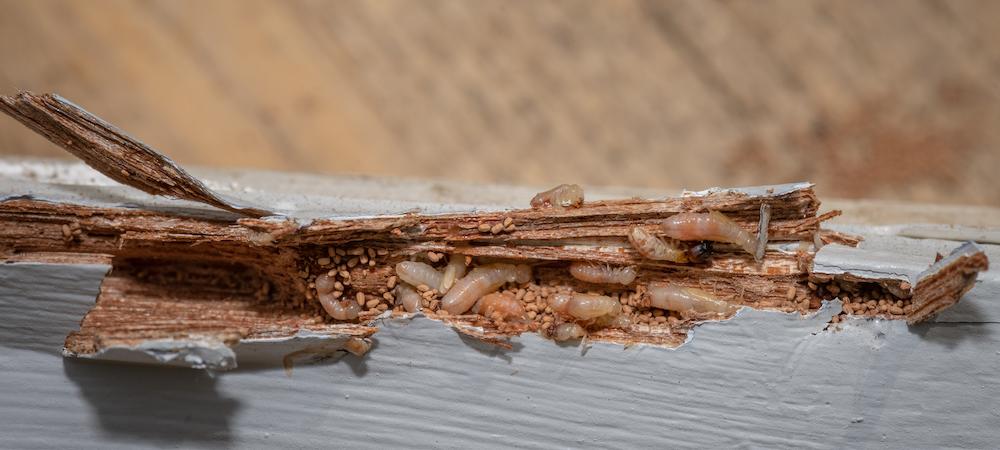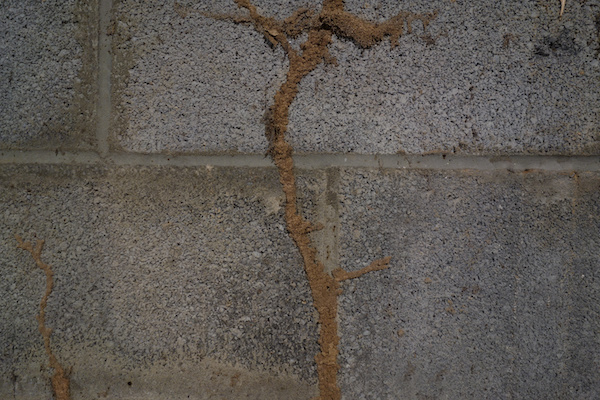Controlling Termites in Virginia

Termites can cause severe damage throughout the Mid-Atlantic region, from rural woodlands to bustling urban areas.
But you don’t have to face these pests alone! In this blog, we're here to help you protect your Virginia home from these pesky pests. From spotting early warning signs to implementing preventive measures, we've got all the information you need to keep your home termite-free for the long term.
Understanding the Termites in Virginia
Termites are a common problem in Virginia, with two main species threatening the region’s homes: the Eastern subterranean termites (Reticulitermes flavipes) and the highly destructive Formosan subterranean termites (Coptotermes formosanus). While each species behaves differently, they can both cause serious damage to your home and other wooden structures.
Growing termite colonies in the laboratory
Overview of Termite Biology, Behavior, and Colony Structure
As social insects, termite colonies are organized into castes comprising workers, soldiers, and reproductive individuals like the queen and king. Depending on the species, the colonies can live underground with intricate tunnels connecting them to your home, while others will establish their homes directly in dry or wet wooden structures.
What’s their main goal? Cellulose. Aided by symbiotic bacteria in their digestive system, termites regularly chew through wood and the occasional plant materials to meet their nutritional needs. This continuous search for food can pose a persistent threat, potentially causing extensive damage if not addressed promptly.
Signs of a Washington Termite Infestation
Spotting the signs of a termite invasion early can prevent serious damage to your home. Look out for:

- Mud Tubes: Subterranean termites construct mud tubes along your home’s foundations, walls, or other surfaces to protect themselves as they travel between their nests and food sources.
- Swarming: During termite mating season, reproductive termites swarm out from their birth colonies to establish new nests nearby. Throngs of flying termites, or alates, around your home, can indicate an active and well-established infestation.
- Wood Damage: Termites feed on wood from the inside out, leaving behind hollowed-out galleries and damaged or weakened wood structures. Look for signs of sagging floors, hollow-sounding wood, or visibly damaged timber.
- Discarded Wings: After swarming, reproductive termites shed their wings, which may accumulate near windowsills, doorways, or other entry points.
Frass can signify a termite infestation but is uncommon with the most prevalent Virginia species. Drywood termites, less common in the region, might expel frass from small "kick holes" in your walls. Subterranean and dampwood termites, on the other hand, usually use their waste to construct mud tubes or as a base for their colonies.
Dangers to Your Home and Risk Assessment
Gifted the nickname “silent destroyers,” termites can easily live up to their reputation, causing extensive damage to homes and businesses across the state. Washington’s temperate climate, characterized by mild winters and humid summers, creates the perfect moist conditions for termites to thrive.
Assessing your risk of a termite infestation can help mitigate long-term costs and repairs. Factors like geographic location, climate, and local conditions play a significant role in determining termite activity. Regions with high moisture levels or heavy rainfall are especially prone to termite infestations.
Homes surrounded by wooded areas or with moisture-retaining soil are also at higher risk. By evaluating these factors and understanding your home's vulnerability, you can better prepare for potential termite threats.
Protecting Your Home From Termites in Virginia
Protecting your home from termite infestation is essential to safeguarding its structural integrity and value. In this section, we will explore effective prevention strategies for termite protection.
Landscaping and Vegetation Management
A well-maintained lawn can help deter termites and other pests. Start by clearing the area around your home by removing excess vegetation, mulch, and wood debris; these materials can attract termites to inch closer near and into your home.
When landscaping, opt for plants that termites are less attracted to, and avoid planting anything too close to your home’s foundation. Regularly trim trees and shrubs that may touch your house, as they can provide easy access for pests to reach your home.
Structural Modifications and Maintenance Practices
Seal any cracks and crevices in your foundation and walls to keep termites out. Repair or replace damaged wood, like siding, roofing, or decking, to eliminate entry points. When building or renovating, opt for materials that termites aren't attracted to, like pressure-treated wood or concrete.
Moisture Control Measures
Keeping moisture levels in check is key to reducing termite attraction and nesting spots. Repair any leaks in plumbing, roofing, and gutters to prevent moisture buildup. Also, regularly check your home’s foundation for proper drainage and no standing water.
Use dehumidifiers to lower humidity levels in damp areas like basements and crawl spaces. Avoid overwatering plants and landscaping near the house, as excess moisture can attract termites.
Termite Barriers and Physical Deterrents
Installing termite barriers and physical deterrents around the property can provide additional protection against a termite invasion. Consider applying metal mesh screens or termite shields to physically deter termites from entering your home.
Early Detection and Monitoring
Schedule annual inspections with qualified pest professionals to assess your property for signs of a termite infestation. Early detection can help you receive prompt treatment and intervention, minimizing the impact on your home’s structural integrity and value.
You can also perform DIY termite inspections to supplement professional inspections and monitor for signs of termite activity between scheduled visits. However, keep in mind that professional termite inspections are the only way to receive a thorough assessment of your property’s termite risk.
For comprehensive protection against termites in Washington, DC, Virginia, and Maryland, contact us at Connor’s Pest Pros. Our qualified team can find hidden infestations that may go unnoticed during DIY inspections.
Whether you suspect termite activity or buying or selling a home, our pest professionals have the expertise, tools, and treatments to detect and address termite infestations, protecting your home from costly damage.
Contact us today to set up a treatment service or schedule a time for one of our technicians to complete a Wood Destroying Insect Report (WDIR) before your home sale!
